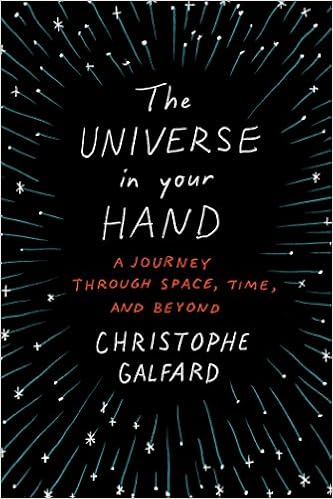
A reviewer for the Spectator, introducing Christophe Galfard’s The Universe in Your Hand: A Journey Through Space, Time, and Beyond thinks he is surprising us by telling us that:
Physicists have a nerve. I know one (I’ll call him Mark) who berates every religious person he meets, yet honestly thinks there exist parallel universes, exactly like our own, in which we all have two noses. He refuses to give any credit to Old Testament creation myths and of course sneers at the idea of transubstantiation. But, without any sense of shame, he insists in the same breath that humans are made from the fallout of exploded stars; that it is theoretically possible for a person to decompose on one side of a black hole and recompose on the other, and that there are diamonds in the sky the size of the moon.

If the fundamentalists of the American Midwest want to advance exegesis, they should send their preachers to MIT. Parallel worlds; entire universes smaller than the size of a subatomic particle; the fact that there is real, visible evidence that all possible existences (some of which would have led to the worlds of two noses) were at one stage frozen in time, and that this evidence comes from looking up at the sky when sitting on a sunlounger in the middle of the Pacific Ocean; that there are universes inside universes inside universes, encased like bubbles … all this, says Galfard, ‘may (and should) sound completely crazy to you (it does to me, but I like it)’; yet there are sound and consistent arguments, each built out of the basic ideas of GCSE physics, to justify every word. More.
The maddest argument can be internally sound and consistent. The only thing that gets in the way is the only universe we know of.
See also: How we got to the point where this stuff is thought of as science.
and
Imagine a world of religions that naturalism might indeed be able to explain
Follow UD News at Twitter!